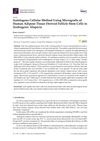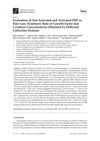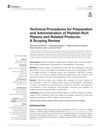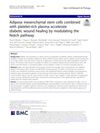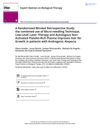Impact of Different Preparation Methods to Obtain Autologous Non-Activated Platelet-Rich Plasma and Activated Platelet-Rich Plasma in Plastic Surgery: Wound Healing and Hair Regrowth Evaluation
January 2020
in “
International Journal of Molecular Sciences
”

TLDR Different methods of preparing Platelet-Rich Plasma (PRP) can affect wound healing and hair regrowth in plastic surgery. Using a kit with specific standards helps isolate PRP that meets quality criteria. Non-Activated PRP and Activated PRP have varying effects depending on the tissue and condition treated. For hair regrowth, Non-Activated PRP increased hair density more than Activated PRP. Both treatments improved various aspects of scalp health.
Three years ago, a study evaluated the impact of different preparation methods for Autologous Non-Activated Platelet-Rich Plasma (A-PRP) and Activated Platelet-Rich Plasma (AA-PRP) in plastic surgery, specifically in wound healing and hair regrowth. The study found no standardized preparation technique for PRP therapies and evaluated eight different devices for PRP extraction. The study concluded that using a kit with Processing Quantitative Standards (PQSs) and Processing Qualitative Standards (PQLSs) enables the isolation of A-PRP, meeting consensus quality criteria. The study also found that A-PRP and AA-PRP have different impacts depending on the tissue and pathology being treated. For hair regrowth, A-PRP treatment resulted in a 31 ± 2% increase in hair density, while AA-PRP treatment resulted in a 19% ± 3% increase, with a statistically significant difference in hair growth (p = 0.0029). Both treatments improved the number of follicular bulge cells and follicles, epidermal thickening, vascularization, and the number of Ki67+ basal keratinocytes in PRP-treated scalp tissue compared with placebo.
